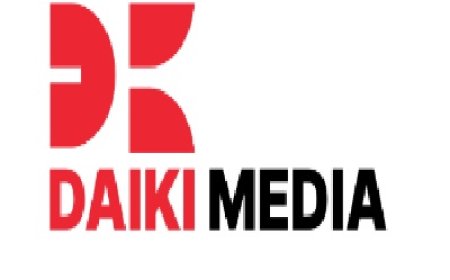Small Hospitals Are Drowning in Costs — And Nobody's Talking About the Real Leak

Running a small hospital in today's world feels like tap-dancing on a landmine. You're not just fighting for patients. You're fighting to stay open. The rent doesn't wait. The electric bill? That thing could fund a small country. And payroll? Let's not even go there.
But here's what gets under my skin: it's not always the big, scary stuff draining your budget. Sometimes it's the quiet, unnoticed crap. The kind that hides in contracts nobody's looked at in five years. The invisible line items. The things labeled "services" come with a price tag you haven't questioned in a decade.
Purchased services.
That's the elephant in the room. And for small hospitals? It's eating your lunch.
Wait what even are purchased services?
It sounds fancy, right? It's something only big-shot administrators care about. But no, it's basic. Purchased services are all the non-supply stuff you pay outsiders to do.
So laundry. Dietary. Biomedical waste pickup. IT support. Elevator maintenance (yeah, those contracts are sneaky). Even transcription and call center help.
Anything you're not doing in-house that still costs money.
And let me tell you, small hospitals are bleeding through these things without realizing it.
No One's Watching the Store
Here's the brutal truth: big hospital systems? They have procurement teams. Strategy departments. Data dashboards with blinking lights that tell them if they're overpaying.
Small hospitals? Not so much. You've got Susan from accounting, who also handles HR and sometimes fills in at the front desk. Do you think she has time to review 57 vendor contracts and compare pricing trends?
Nope. So, stuff auto-renews. Service levels stay the same while prices creep up. A vendor you've been using since 2009 charges triple and nobody's noticed.
Why? Because everyone's too damn busy putting out fires to stop and ask,
"Wait... are we being ripped off?"
"Cost Optimization" Sounds Like Corporate Speak Until You're Broke
I get it. The words sound cold. A suit from corporate just landed with a clipboard and a mission to slash everyone's hours.
But that's not what this is.
In the real world, Cost Optimization for Small Hospitals Through Purchased Services is about finally shining a flashlight into the corners where money quietly disappears. It's not about cutting people or stripping away care. It's about not paying $1.75 per pound of linen when your peers pay $0.85. It's about realizing your IT contract includes services you haven't used in three years.
It's about surviving.
You Don't Have to Be a Finance Wizard Just Start Somewhere
Here's what I tell every small hospital leader who's drowning in invoices:
Step 1: Pull the damn contracts.
Seriously. Get a folder. Print them out if you have to. Circle renewal dates. Look at what you're paying. You'd be amazed how many people don't even know when their elevator maintenance contract renews (spoiler: it's probably next week).
Step 2: Google some benchmarks.
You don't need fancy data tools. Just hop online and check what other hospitals pay for similar services. Or better yet, call your buddy over at County General and ask what they're paying. Get nosy. Be annoying. Knowledge is power, and vendors hate it when you suddenly get smart.
Step 3: Centralize it all.
Stop letting every department do its own thing. That's how you end up with three pest control vendors and five copier contracts. Make one person, even if it's you, the boss of purchased services. Standardize the process. One renewal calendar. One place for all vendor info. It doesn't need to be pretty, just consistent.
Step 4: Call vendors' bluff.
You'd be shocked how many of them drop prices the second you hint that you're shopping around. It's like magic. But you've got to ask. Vendors get lazy when they think no one's watching.
Step 5: Pay attention to what you need.
Do you need after-hours IT support every day? Or could it be on-call once a week? Are you ordering 100 meals daily when your census hasn't cracked 60 in six months? Are you still paying for pager support (yes, it happens)?
Real cost optimization is about aligning spending with reality, not the version of reality from 2015.
The Real Reason This Matters (And It's Not Just Money)
Nobody tells you that every dollar you waste on overpaid services is a dollar you can't use for staff wages, better equipment, or patient programs.
I know hospitals where the admin team had to freeze hiring while still paying full freight for an AV contract they didn't even use during COVID.
Do you think that doesn't sting? Try explaining to your nurses why their shift bonuses are gone while the linen service is billing you like you run a five-star hotel.
This stuff matters. Deeply. Not just because it saves money, but because it protects the people doing the real work.
And Let's Be Honest You Can Do This
I know, I know you're thinking:
"Great, one more thing to worry about."
But this isn't about doing it all tomorrow. It's about starting.
Print one contract today. Look at one line item. Make one call.
The thing about leaks is they start small. So do the fixes.
Final Thought (Or Maybe a Rant)
I've seen small hospitals turn things around by doing this work. It's not flashy. There's no ribbon-cutting ceremony for switching laundry vendors. No awards for renegotiating copier leases.
But damn if it doesn't matter.
The ones who survive? They pay attention to the boring stuff. The contracts. The "invisible" expenses. The purchased services just sit there quietly, draining the budget.
And when do you get those under control?
You breathe a little easier.
Your nurses stop looking over their shoulders.
Your patients? They feel the difference even if they never know why.
So yeah. It's not sexy. But it's real.
And for small hospitals fighting to stay afloat, reality is what matters.























